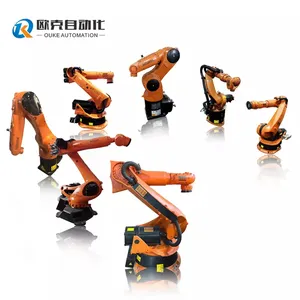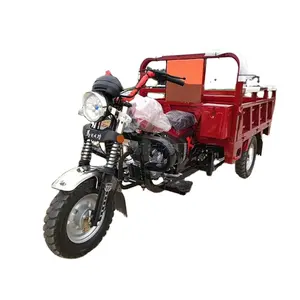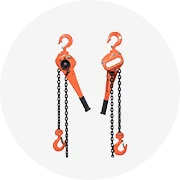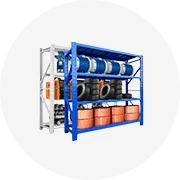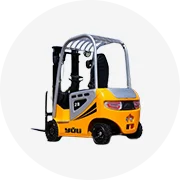Popular in your industry










Related Searches:

























Top categories
About conveyor roller motor
The conveyor roller motor is an essential element in the mechanization of material transport systems, engineered to propel conveyor belts and streamline the movement of goods across a multitude of sectors. The conveyor power roller melds mechanical and electrical engineering to refine operations in a variety of environments.
Types and Characteristics of Conveyor Roller Motors
In the domain of conveyor roller motors, a range of models exists, each with unique features designed to meet particular operational demands. The powered roller is commonly employed in settings with light to medium load requirements, such as e-commerce and packaging sectors. For heavier duties, like those in automotive assembly or heavy machinery production, the motor driven roller conveyor is the go-to for its durability and capacity to manage significant weights. Precision-engineered rollers, including the Itoh Denki power moller, provide refined control for handling delicate or valuable goods. The MDR roller, with its sensors and adjustable speed functions, is tailored for flexibility, serving industries in need of versatile handling systems. From the energy-conserving 24vdc powered roller conveyor to the quietly operating Interroll motor roller, there is a conveyor roller motor to suit every business requirement.
Structure and Operation of Conveyor Roller Motors
The motorised conveyor roller comprises a sophisticated array of parts, each integral to its function. At its core, typically lies a brushless DC motor, selected for its efficiency and longevity. This motor is linked to a gearbox that adjusts torque and speed to the conveyor system's needs. The roller tube, acting as the external casing, engages directly with the conveyor belt and is constructed from materials such as steel or robust plastics to endure continuous use. End caps and precision bearings ensure the tube rotates smoothly and maintain the roller's position within the conveyor framework. Advanced models feature sensors that detect items on the conveyor, enabling automated activation and deactivation, which bolsters efficiency and diminishes wear. The harmonious assembly of these components yields a motor driven roller that is dependable, efficient, and up to the challenges of contemporary material handling systems.
Materials and Their Properties
The selection of materials for motorised roller conveyors is crucial, influencing their performance and appropriateness for various settings. Carbon steel, with its superior strength-to-weight ratio, is favored for its ability to support hefty loads without unduly burdening the system. Stainless steel is the material of choice in scenarios demanding cleanliness and resistance to corrosion, such as food processing or pharmaceuticals. The durability, wear resistance, and maintainability of these materials are pivotal in their choice, ensuring the conveyor roller motor functions effectively in diverse environments, from the dust-laden confines of a mine to the sterile spaces of a semiconductor plant.
Business Usages and Applications
The motor driven roller conveyor has become an indispensable asset in material handling across a broad spectrum of industries. In retail, it expedites the transfer of merchandise from storage to dispatch, a critical factor in the current rapid market. Apparel stores benefit from these systems for swift stock management and distribution. In the construction sector, they are vital for transporting materials on-site, boosting safety and productivity. The food industry appreciates the ease of sanitation and the maintenance of hygienic standards afforded by stainless steel rollers. These conveyors not only enhance operational efficiency but also contribute to a safer, more productive work environment, underscoring their substantial commercial value.
Functions and Tasks
The conveyor belt roller motor is crafted to execute an array of tasks. It propels the movement of goods, adeptly adjusting to varying speeds and loads. In distribution hubs, these motors sort and sequence parcels, ensuring timely and accurate delivery. Within manufacturing settings, they can be synchronized with additional machinery to create a cohesive production line, transferring components between processes without manual intervention. These systems extend to quality control, where they can be programmed to reroute defective items seamlessly, maintaining uninterrupted production flow.
Features and Unique Selling Points
The attributes of motorised conveyor rollers distinguish them in a competitive marketplace. Energy conservation is a defining feature of contemporary models, with systems like the 24vdc powered roller conveyor cutting operational expenses. The Interroll powered rollers are crafted for silent functioning, reducing acoustic disturbances in the workplace. Modular constructions provide adaptability, enabling companies to scale or adjust their conveyor setups with minimal interference. Intelligent features, such as built-in sensors and programmable controls, equip the MDR rollers to adjust to fluctuating workflow requirements, representing a prudent investment for firms aiming to future-proof their operations.
Benefits and Positive Outcomes
Employing a conveyor roller motor within a material handling framework yields numerous advantages. Automation diminishes the necessity for manual labor, decreasing injury risks and bolstering safety. It also leads to heightened productivity, as goods are transported more swiftly and precisely. The careful and gentle handling by systems like the Itoh Denki power roller minimizes product damage, curtailing costs related to waste and reprocessing. The adaptability of these systems to various operational scales and demands renders them a valuable asset for enterprises of all sizes.
How to Choose the Right Conveyor Roller Motor?
Selecting the right conveyor roller motor is a crucial decision. Considerations such as the weight of the cargo, conveyor speed, and environmental conditions must be taken into account. For instance, a Rulmeca idler may be the optimal choice for heavy-duty tasks, whereas a lighter motor driven roller would be adequate for less intensive applications. Comprehending the specific requirements of your operation is vital in choosing a motor that ensures performance and dependability.
How to Maintain Your Conveyor Roller Motor?
Proper maintenance of motorised conveyor rollers is vital for their sustained performance and reliability. Routine cleaning to eliminate debris, lubrication of bearings, and checks for wear are essential maintenance practices. Timely replacement of parts, such as Itoh Denki rollers, upon signs of deterioration can avert malfunctions and preserve the conveyor system's efficiency.
How to Install a Conveyor Roller Motor?
Installing a conveyor roller motor demands meticulous planning and precise execution. It is imperative to position and secure the roller accurately within the conveyor frame. Electrical connections should comply with safety regulations, and the system must undergo comprehensive testing before commencing regular operations. Adherence to the manufacturer's instructions, such as those for Itoh Denki power rollers, is essential for a successful setup.
In conclusion, the conveyor roller motor is a fundamental component in the automation of material handling, offering a synthesis of efficiency, dependability, and versatility. With an array of models tailored to meet distinct industry requirements, these motors are designed to optimize business processes. Discover the extensive selection of conveyor roller motors on Alibaba.com to identify the ideal solution for your material handling needs.
